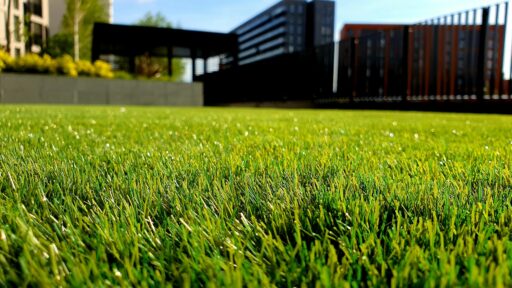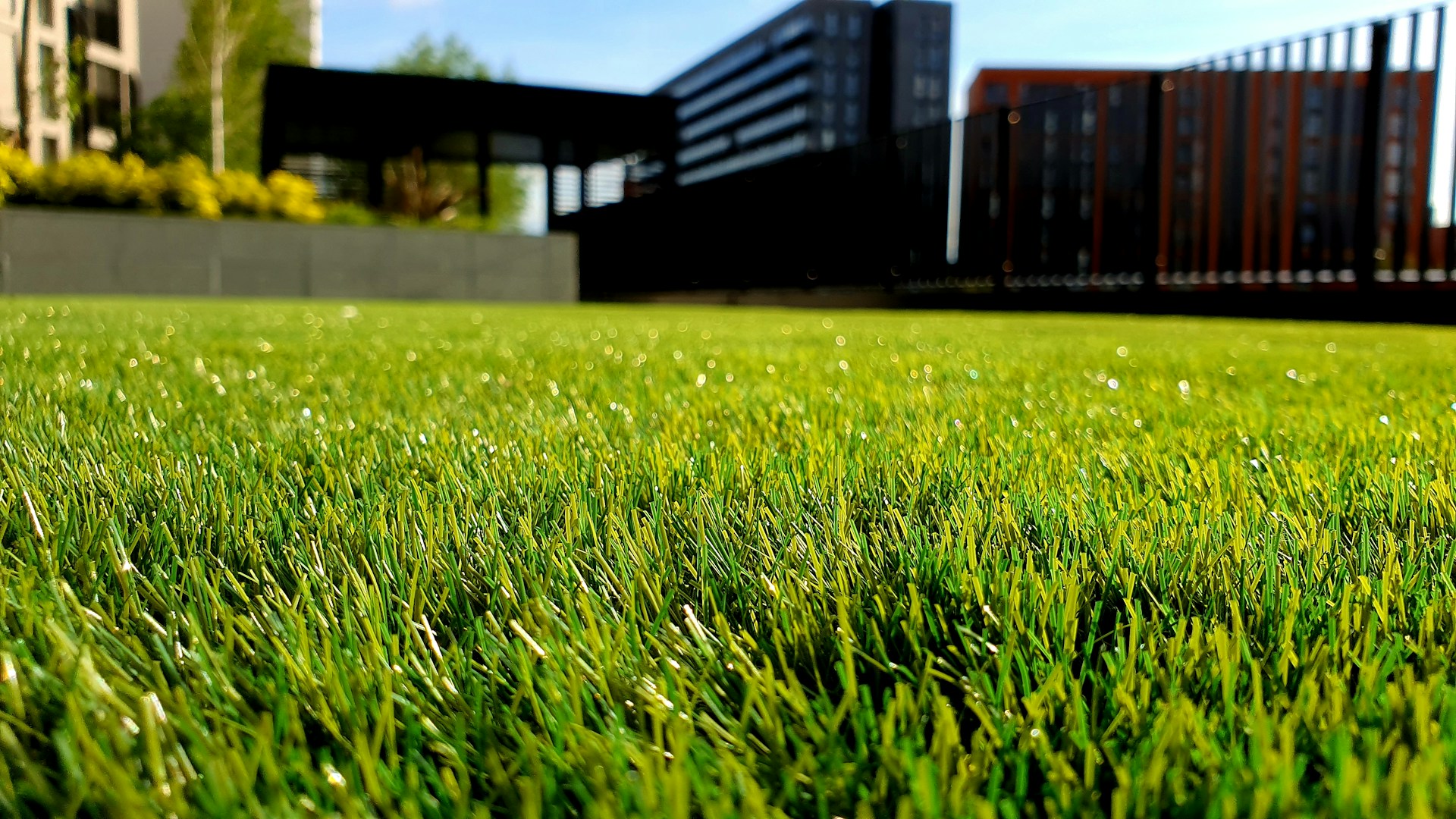A healthy lawn is not an accident. It is the result of smart planning and steady care. With Professional Lawn Care Services, any yard can look neat, green, and strong in every season.
Great lawn care is more than cutting grass. It protects soil, stops weeds, and feeds roots. Done right, your yard becomes a calm space for family time and curb appeal. This guide shows how to plan, what to expect, and how to keep results all year.
Why Professional Lawn Care Services Matter
Good lawn care saves time and money. It also prevents bigger issues later. Thick grass resists weeds, holds moisture, and stays cool in heat. That means fewer costly fixes. A trusted team, like D&T Property Maintenance, builds a plan for your lawn’s needs. They do not use a one-size-fits-all checklist. The plan covers soil health, grass type, sun, shade, and foot traffic.
Here is the key idea. Strong roots make strong grass. When you feed the soil, you feed the plant. When you cut at the right height, you protect the crown. When you water well, roots grow deep. Each step works together. Professionals track these steps for you.
What a Complete Lawn Care Plan Includes
A complete plan covers the essentials. It is simple to follow and easy to repeat.
- Mowing at the right height and on a steady schedule
- Watering to reach roots, not just the surface
- Fertilizing with the right nutrients at the right time
- Weed control that stops seeds before they sprout
- Pest and disease checks to catch problems early
- Aeration to relieve compact soil
- Overseeding to thicken thin spots
- Edging and clean-up for a sharp finish
In short, lawn care is a system. Each piece supports the others. When one is missing, results slip. When all is in place, your lawn improves week by week.
Seasonal Lawn Care Schedule for Year-Round Results
Every season has a job. Follow this simple calendar to stay on track.
Spring Lawn Care Checklist
Spring wakes your lawn up. Focus on clean-up and growth.
- Rake leaves and debris so grass can breathe.
- Test the soil if you have not done so in two to three years.
- Apply pre-emergent weed control early in the season.
- Fertilize lightly to support new growth.
- Mow higher at first to protect tender shoots.
- Spot-seed bare areas after the soil warms.
Tip: Do not rush heavy feeding. Feed too soon, and you push weak growth. Aim for steady, balanced progress.
Summer Lawn Care Tips
Heat and drought stress the grass. Protect it with smart habits.
- Water early in the morning. Aim for about 1 inch per week, including rain.
- Mow on the higher side to shade the soil.
- Keep blades sharp to prevent tearing.
- Watch for pests like grubs. Look for spongy turf or bird activity.
- Treat weeds with care. Heat can make herbicides harsh on grass.
Tip: Deep, rare watering is better than frequent, light watering. It trains roots to grow deeper.
Fall Lawn Recovery and Prep
Fall is prime time to fix and fortify.
- Aerate compact areas to improve air and water flow.
- Overseed thin spots to thicken the lawn.
- Apply a fall fertilizer to strengthen roots.
- Keep mowing until growth stops. Lower the height slightly at the end to reduce snow mold risk.
- Clean leaves often. Thick leaf piles block light and trap moisture.
Tip: Fall work pays off big next spring. Healthy roots over winter lead to dense, green growth.
Winter Lawn Protection
Protect the lawn while it rests.
- Keep heavy traffic off frozen or soggy grass.
- Clear debris after storms.
- Mark driveway edges to avoid plow or shovel damage.
- Plan next year’s service schedule.
Tip: Do not use harsh ice melt near grass. Use pet-safe or lawn-safe products when possible.
Best Practices: Mowing, Watering, and Feeding
Simple habits make a big difference.
- Mowing height: Many cool-season grasses do best at 2.5 to 3.5 inches. Many warm-season grasses do well between 1 and 2.5 inches. When in doubt, go a bit higher to protect the crown.
- One-third rule: Never remove more than one-third of the blade at a time.
- Watering: Most lawns need about 1 inch of water per week. Water early. Water deeply. Avoid daily light sprinkling.
- Fertilizing: Use balanced products matched to your soil. Feed light and often rather than heavy and rare, unless a soil test suggests otherwise.
These basics support thick turf. Thick turf blocks light to the soil, which helps stop weeds from sprouting. It is a simple and natural defense.
Weed, Pest, and Disease Control
Weeds are easier to prevent than to remove. Pre-emergent products target seeds before they sprout. Post-emergent products treat visible weeds. Timing matters. Professionals track local growth cycles so treatments land at the right moment.
Pests like grubs eat roots. Signs include brown patches that peel up like a carpet. Birds feeding in one area can be a hint. Disease often shows as spots, rings, or fuzzy growth after hot and humid weather. Quick action limits spread. Aeration, proper watering, and sharp blades reduce disease risk.
Integrated care is the best plan. Improve soil. Mow right. Water well. Then use targeted products only as needed. This protects your lawn and the environment.
Aeration and Overseeding for Thicker Lawns
Soil compacts under foot traffic and rain. Compaction blocks air, water, and nutrients. Core aeration pulls small plugs from the soil so roots can breathe and grow. Overseeding adds fresh seed to fill gaps and improve density. Together, these steps boost new growth and crowd out weeds.
Timing is key. In cool-season zones, early fall is often best. In warm-season zones, late spring can work well. A pro will match the plan to your grass type and climate.
DIY vs Professional Lawn Care Services
Choosing between doing it yourself and hiring a service comes down to time, tools, skill, and the results you want. DIY takes many hours each month to plan, learn, and do the work. You buy and maintain tools like a mower, spreader, sprayer, and sharpener. Results vary with your effort and timing. You also handle all products and safety steps yourself.
Professional Lawn Care Services save your time and reduce risk. A trained team brings pro-grade tools and tested programs. They schedule visits at the right time for your area. Progress is steady and easier to measure. The cost is clear, and the work is safe and consistent. If you enjoy yard work, DIY can be rewarding. If you want steady results with less effort, a service plan is often the better value.
How to Choose a Trusted Lawn Care Partner
Pick a partner who listens, explains, and follows through.
- Look for licensed and insured service.
- Ask for a site visit and a written plan.
- Request clear pricing and service windows.
- Check that they track grass type, shade, and soil needs.
- Expect simple reports after each visit.
- Ask about eco-friendly options when available.
- Look for a satisfaction policy.
A reliable team takes the guesswork out of care. They educate you, too, so you know why each step matters and what comes next. Many homeowners find that a local, responsive company like D&T Property Maintenance checks these boxes and offers a smooth, easy experience.
Simple Case Example: From Patchy to Polished
Picture a typical 4,000-square-foot lawn with thin spots and spring weeds. The plan begins with a spring clean-up, pre-emergent weed control, and a gentle feeding. Mowing height is set higher to protect the crown.
In early summer, watering shifts to deep, early-morning cycles. Edges are trimmed, and blades stay sharp. Mid-season, a few crabgrass plants show up along the driveway. They get spot-treated. Traffic paths start to thin, so those areas are flagged for fall overseeding.
In the fall, the team aerates and overseeds. A fall fertilizer goes down to build roots. By late fall, the lawn looks fuller and more even. Next spring, growth is faster and thicker with fewer weeds. The owner spends less time on problems and more time enjoying the yard. This is the power of a steady, seasonal plan.
Common Lawn Care Mistakes to Avoid
- Cutting too short, which stresses the grass and invites weeds
- Watering at night, which can promote disease
- Skipping fall care, which weakens roots for next year
- Over-fertilizing, which burns plants and can harm waterways
- Using dull mower blades, which tear grass and leave brown tips
Avoiding these traps keeps your lawn healthier with less effort.
Getting Started the Smart Way
Start simple. Set goals. Do you want fewer weeds, richer color, or a softer play area? Share this with your lawn care partner so they can tailor the plan. If you prefer a pro-managed program, schedule a walkthrough and ask for a seasonal roadmap. If you want to DIY part of the work, ask which tasks matter most and how to time them.
Remember, consistency wins. A clear plan, done on schedule, outperforms random bursts of effort. If you want support from day one, ask about Professional Lawn Care Services in your area and request an easy, step-by-step plan you can follow.
Conclusion
A perfect yard is not magic. It is a plan that focuses on soil health, proper mowing, smart watering, timely feeding, and well-timed treatments. Professional Lawn Care Services turns that plan into weekly action you can count on. With the right team and a steady schedule, your lawn will look better each month and stay strong through every season.








